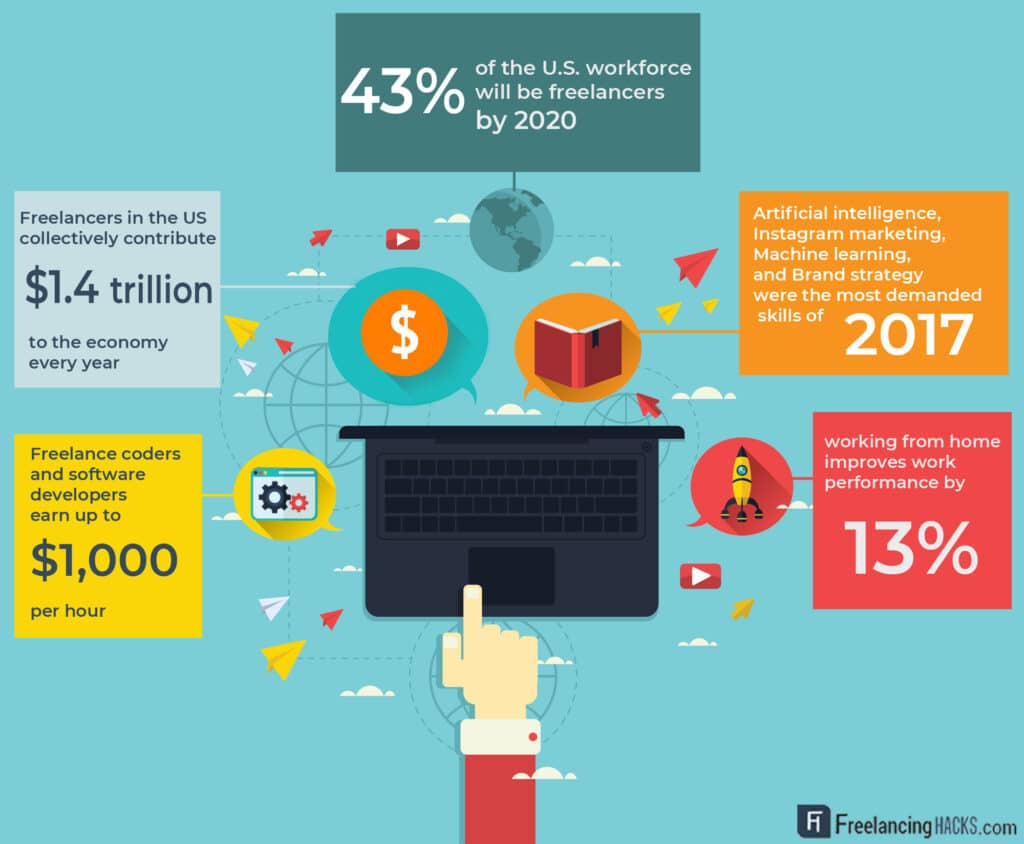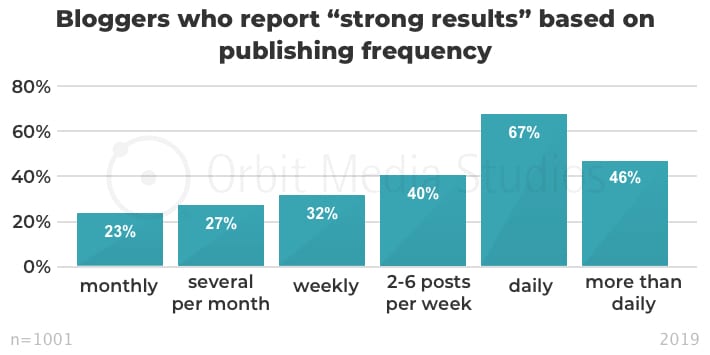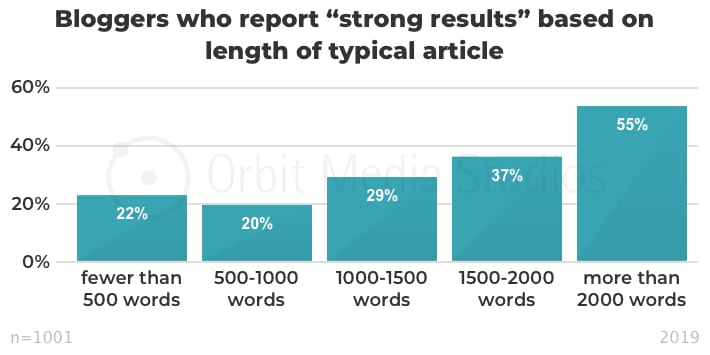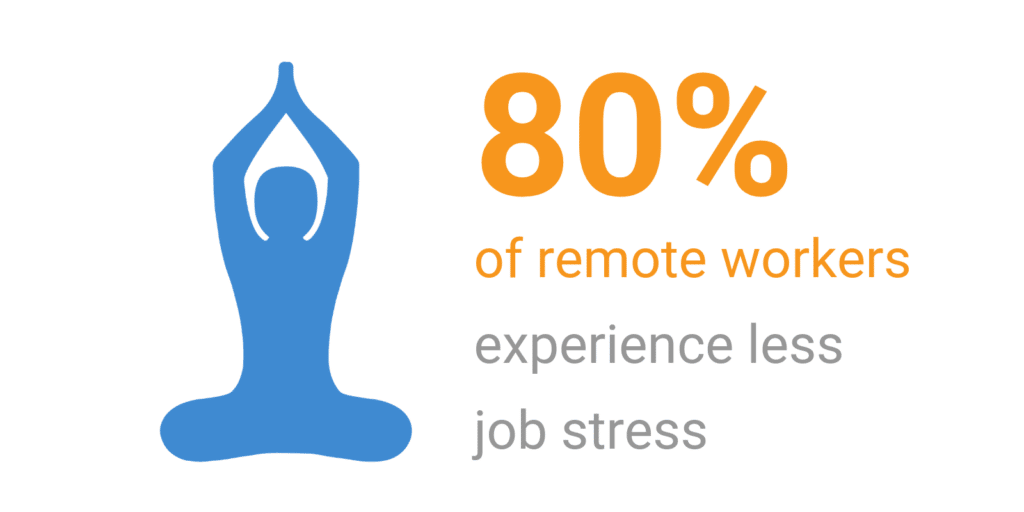Taking the leap into freelancing is quite similar to working a side-hustle. You can pick and choose projects you are passionate about and make time to work on them after working your 9 to 5. Freelancing also presents the opportunity to work remotely, so you can look forward to a lot of flexibility.
Before we dive in, let’s check out some freelancing stats you should be aware of:
- 57M people work as freelancers.
- 61% of freelancers specialize in 2-3 skills.
- Freelancing contributes $1.4 trillion to the U.S. economy.
- 70% of freelancers work on 2-4 projects at a time.
- 31% of freelancers make $75,000 or more.

In this blog post, I’ll highlight some key areas that you can consider as you push toward growing your freelance business.
Build a Personal Brand
Building a personal brand is crucial for instilling trust and credibility among your target as well as existing customer base. When it comes to business growth, 84% of decision-makers start their buying process using referrals, checking Google only after the referral is made.
Whether you’re just starting out with your freelancing business or have been doing it for awhile now, building your personal brand should be an integral part of your income generating strategy.
Finally, make sure you are doing the following:
- Have a social media presence and be active.
- Produce evergreen content (keep reading because I talk more about this below).
- Network with other like-minded individuals whose skill sets. complement yours so that you can rely on one another for referrals.
Develop Content Consistently
One of the key ways to stay relevant, have an authoritative voice, and attract new clients is to develop content around your space. Doing so will allow you to showcase your expertise, get comfortable with blogging, and leverage other avenues to display successful projects you’ve taken on.
It’s okay if you’re not entirely comfortable with blogging, let alone creating other types of content. The advice I’d give here is to just get out of your comfort zone and start writing.
Here are some steps to get going:
- Read my previous blog post on How to Start a Blog.
- Develop a content calendar that includes topics that you are most interested in writing about.
- Do some basic keyword research to understand popular and long-tail key phrases that are being searched for.
- Make sure you have a clear CTA in most of your blog posts. Doing so will prompt readers to take some sort of action, e.g., contact you, subscribe to your newsletter, etc.
Further, here’s a study done by Orbit Media that highlights the sweet spots for bloggers when it comes to content creation:
- 67% of bloggers who pushed out new content daily report seeing strong results:

- 55% of bloggers report strong results with posts that are more than 2,000 words. However, also know that the average blog post is around 1,200 words.

Further, you can also mix up the type of content being pushed out and test out what works best with your audience. Take advantage of Google Analytics and understand what kind of content is driving the most pageviews with the lowest bounce rate. From there, you can take the top-performing content pieces and turn them into longer-form assets.
Look at Freelancer Websites and Job Postings
In addition to your LinkedIn profile, you should look at other sites where you can:
- Apply for freelancer jobs in your field of expertise that are advertised by companies.
- Post your services on sites like FlexJobs, Fiverr, and Upwork.
For starters, you can certainly use previous work samples on these sites to showcase your skills, allowing you to build an initial base of credibility for your services. From there, make sure that you do the following really well:
- Write a great bio that highlights core competencies. Also, target specific keywords that are relevant to your industry within your bio. This will make your profile more searchable and findable.
- Be succinct and clear about what you have to offer. People who are interested in working with you want to know exactly what they’ll be paying for.
- Make it easy to contact you. Customer service and relationship building will always be a part of freelancing, so giving people a way to easily get in touch with additional questions will help you.
- Don’t be afraid to run specials and provide discounts if they make sense for your margins. Seasonality may play a role, or perhaps you could give a 10% discount if someone signs you on for a larger project. These are things you can test to get a feel for the market and what makes your audience tick.
- Do some research on your competition. Look at what other freelancers in your space are charging and how they are positioning their services. This is a great way to learn and figure out how you will price and position your own services.
Connect with Like-Minded Freelancers
Research your space and look at specific communities where other freelancers hang out on and offline. Then look at how you can connect with them. Sometimes the best way to grow your business is to learn from freelancers who already have a thriving client base full of projects.
Also look for ways that you can provide value to other freelancers as you network with them, especially if they are already established.
Here are some ideas:
- Offer to ghostwrite or contribute content to their blog.
- Interview them for your own blog and feature their work.
- Collaborate where it makes sense (e.g. writing a detailed eBook together, running a webinar, being on a podcast, cross-promotion, etc.).
- Simply ask where they are finding challenges in managing their freelance business and see how you can help fill those gaps.
Final Thoughts
When first starting out, you won’t have a huge portfolio of work or numerous reviews needed to drive sales, and that’s why you need to generate your own content as a way to build out your personal brand.
It is important that as you push to grow your freelancing business, you always look at ways you can add value for your audience and for those with whom you build business relationships. I always recommend that you adopt the philosophy of seeing what you can do for them vs. seeing only what’s in it for you.







One Response